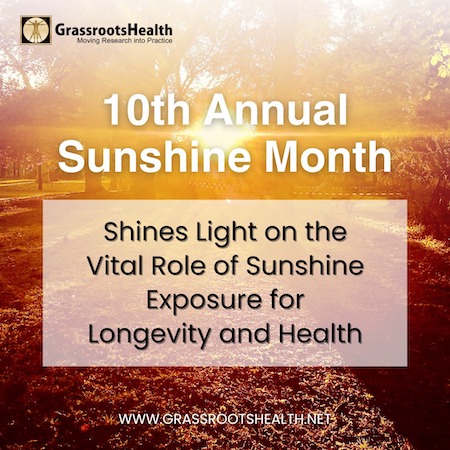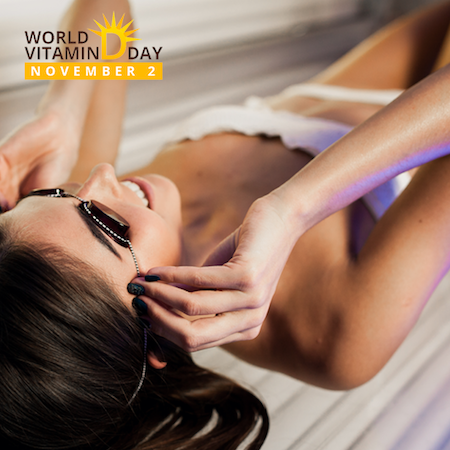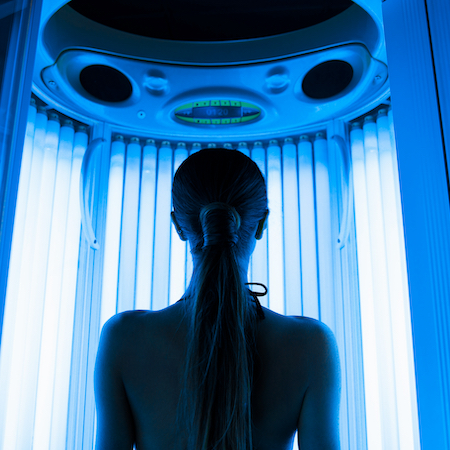Launching into May’s Sunshine Month – New, individualized recommendations are based on skin type, replacing the message of the last few decades which has shunned the sun, saying to cover up and beware of its harms
Key Points
- Individuals with darker skin are at lower risk for skin cancer but higher risk of vitamin D deficiency, while those with lighter skin have a higher tendency to burn and a higher risk of skin cancer, yet sun avoidance will require vitamin D supplementation
- Australia (2023) has become the first country to provide guidelines for sun exposure based on skin type, risk of skin cancer, and risk of vitamin D deficiency, officially recommending increased sun exposure for darker skinned people
- Calculate your risk of having low vitamin D status based on supplementation, sunshine and UVB exposure; take the Vitamin D Deficiency Risk Assessment Quiz today!
Current public health recommendations have advised against sunshine exposure because it has been associated with an increased risk for skin cancer. While true for people with fair skin and a history of repeated sun burns, for the majority of the population, sensible sunshine exposure (in proper doses, without burning) has a positive impact on health and may protect against disease, even helping people live longer.
Australia is the First Country to Update Sun Exposure Recommendations based on Skin Type
Last May, during Sunshine Month, we covered information shared in a webinar presentation by the World Health Organization. In this presentation, Dr. Rachel Neale discussed the benefits of sunshine exposure, most notably the production of vitamin D, with an emphasis on how the balance of benefits and harms differs by skin type. She pointed out how those with darker skin are at lower risk for skin cancer but higher risk of vitamin D deficiency, while those with lighter skin have a higher tendency to burn and a higher risk of skin cancer, yet sun avoidance will require vitamin D supplementation.
In this same presentation, Dr. David Whiteman helped to clarify why there is such a difference, stating that darker skin “renders an SPF equivalent to about 60 or more.”
Based on this data, Australia is now recommending updated sunshine exposure guidelines!
Australia (2023) has become the first country to provide guidelines for sun exposure based on skin type, officially recommending increased sun exposure for darker skinned people.
Published at the end of March, 2023, these recommendations revolve around a risk-benefit scenario based on an individual’s skin type. After 50 years of sun exposure advice being based on white Caucasian skin, this individualized approach to sunshine recommendations is a huge step forward! The recommendations are endorsed by the Cancer Council Australia, Skin Cancer College Australasia, Australasian College of Dermatologists, Healthy Bones Australia, The Australian and New Zealand Bone and Mineral Society, Melanoma Patients Australia, and MS Australia.
Vitamin D Status Can be an Indicator of Having Received Sufficient Sun Exposure
According to the new position statement
“Avoiding the sun and using dietary sources and/or vitamin D supplements to meet vitamin D requirements may seem an attractive solution. However, exposure to UV radiation may have benefits independently of vitamin D, particularly for the immune system, with adequate vitamin D status being an indicator of having received sufficient sun exposure to obtain other benefits. Further, exposing the eyes to longer wavelengths in sunlight reduces the risk of myopia, influences circadian rhythm, and improves sleep and mood. Aside from the direct benefits of sunlight, spending time outdoors facilitates physical activity, which plays a vital role in maintaining health and well-being. Thus completely avoiding sun exposure is not optimal for health.”
The body is designed to produce vitamin D in the skin upon exposure to UVB radiation from sunshine. The vitamin D level is therefore often used as a measurement for adequate sun exposure, and especially for those who don’t supplement with vitamin D, a vitamin D deficiency can also indicate “sunshine deficiency.” However, it is important to keep in mind that there are many benefits to sunshine exposure beyond vitamin D!
The new recommendations are tailored according to unique differences between three specific groups, based on skin type, risk of skin cancer, and risk of vitamin D deficiency. Those at high risk of skin cancer (individuals with very pale skin and/or olive/pale brown skin but with other risk factors) are advised to be more cautious with sunshine exposure and increase intake of vitamin D with diet and/or supplements. Those at low risk of skin cancer (individuals with constitutively dark skin) are advised to spend more time outdoors when the UV index is 3 or higher, with ample skin exposed. They suggest using sun protection only if spending extended amounts of time in the sun, after first exposing the skin without protection, making sure not to burn. Individuals in between these two groups, with an intermediate risk of skin cancer (such as those with olive or pale brown skin and no other risk factors), are advised be more cautious and tailor their sun protection according to the UV index and time in the sun.


